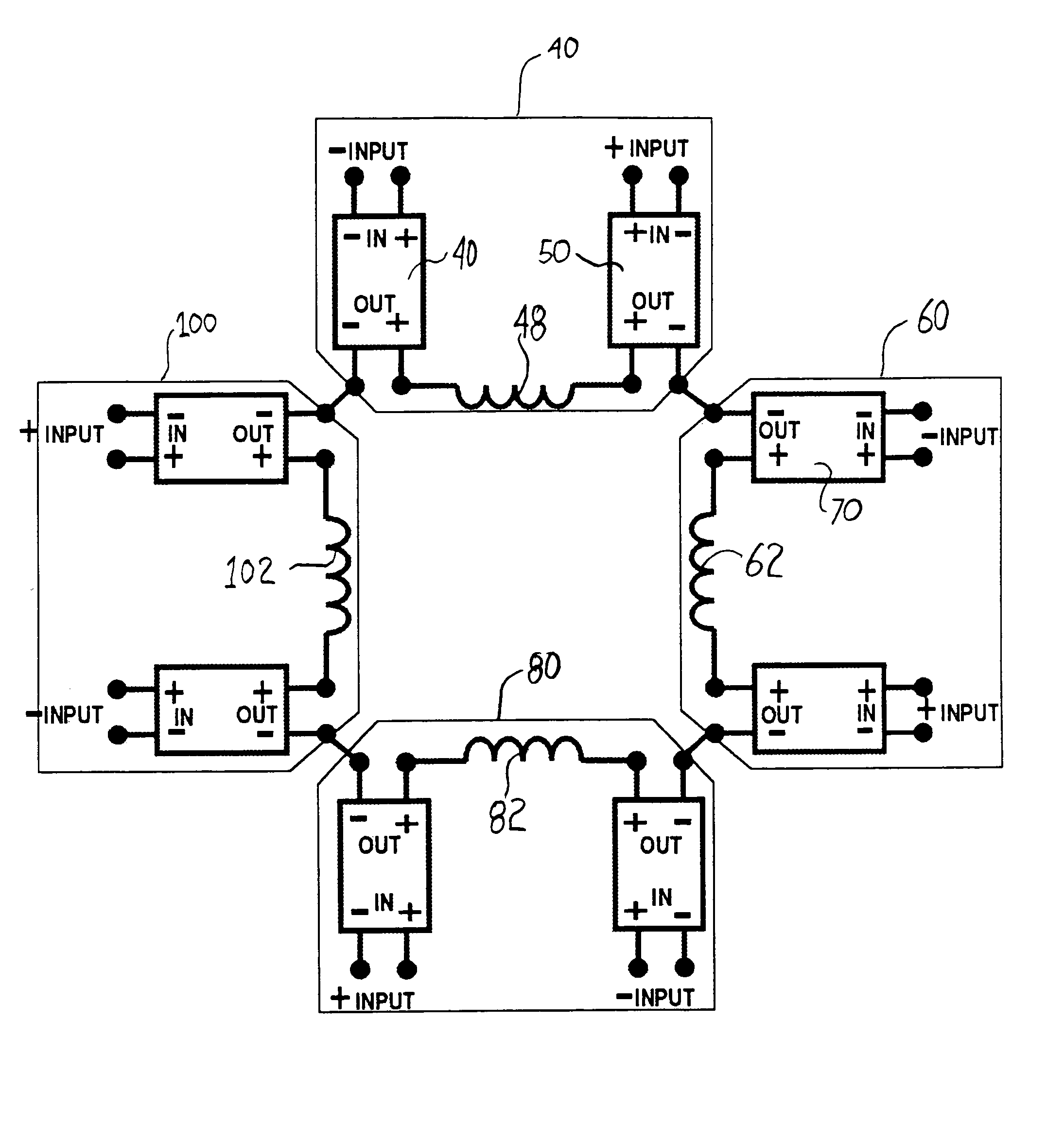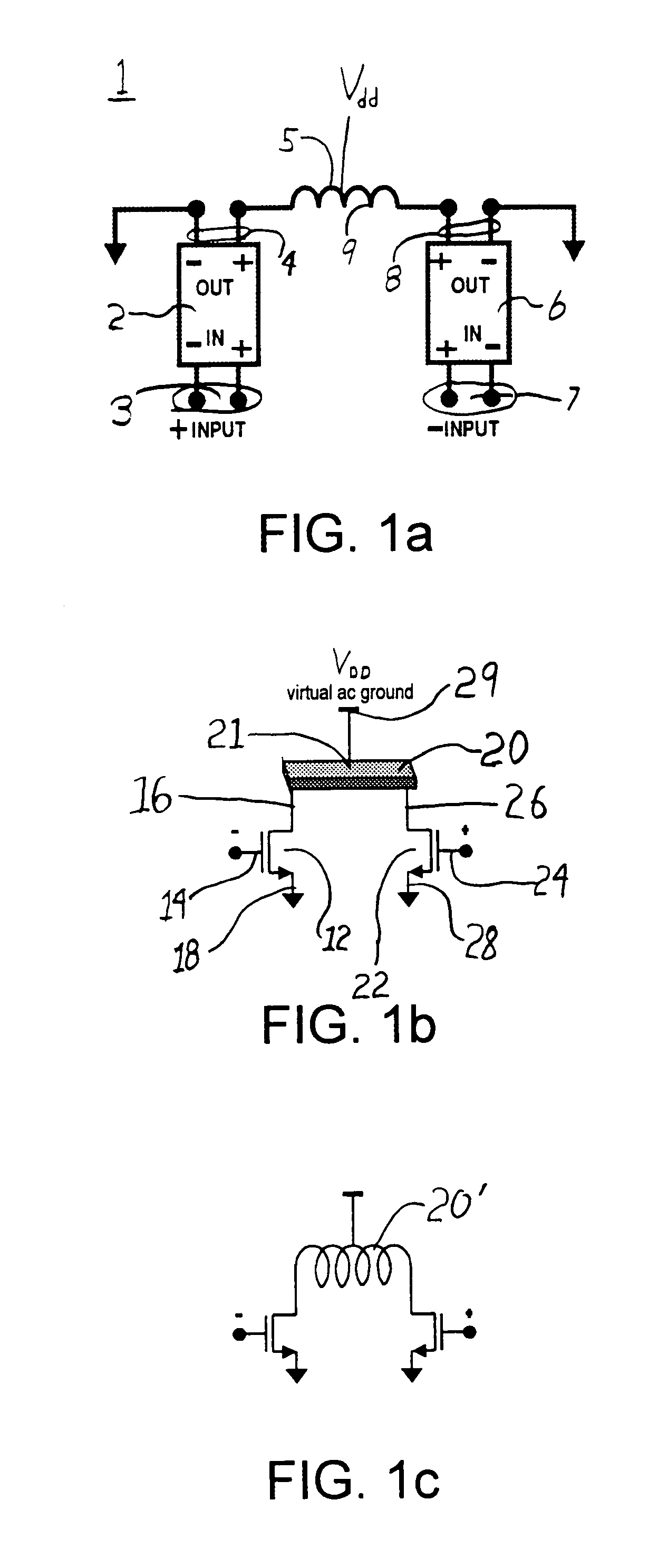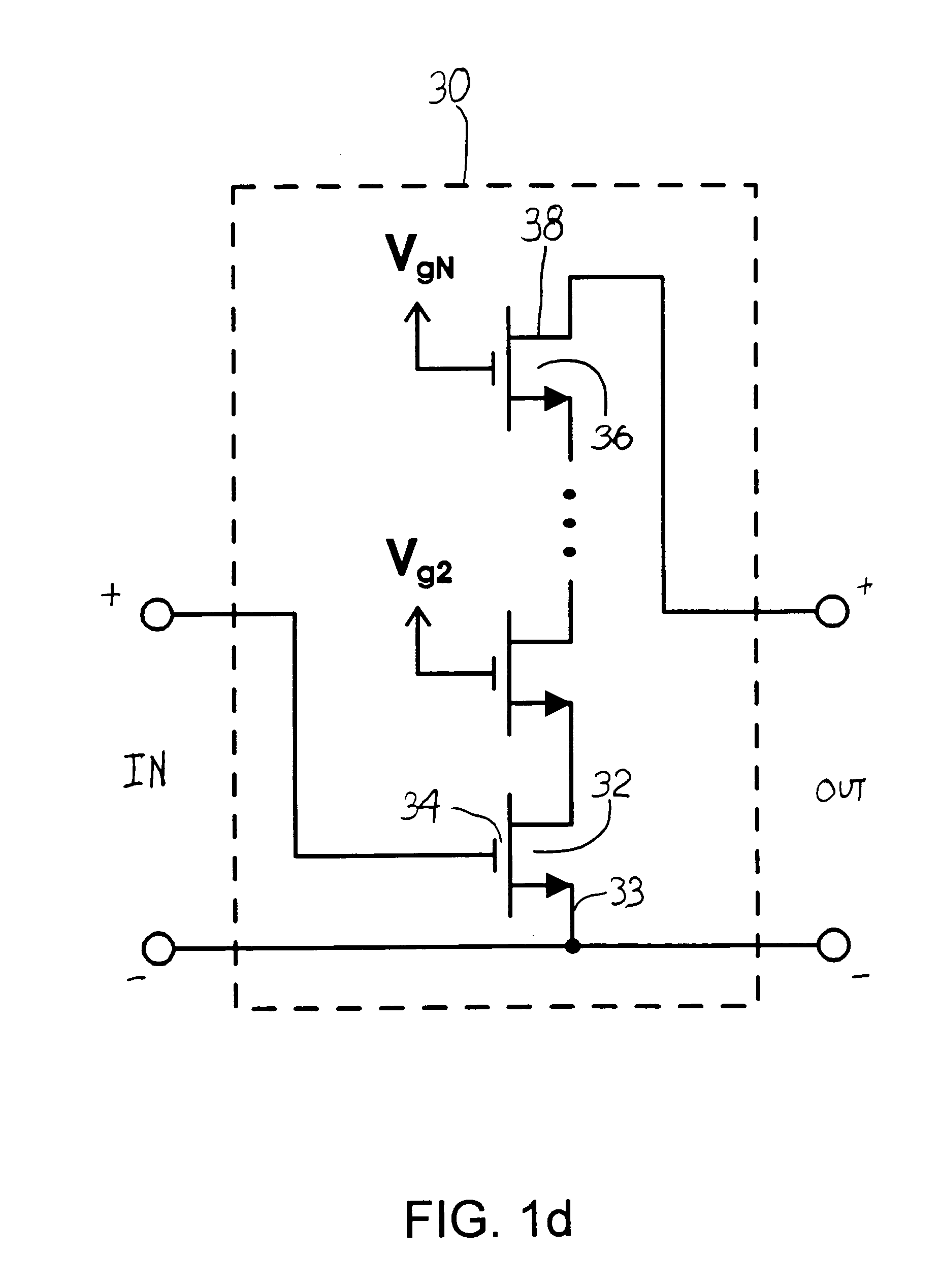Distributed circular geometry power amplifier architecture
a technology of power amplifiers and circular geometry, applied in the direction of amplifiers with multiple amplifying elements, amplifiers with coupling networks, etc., can solve the problems of low resistance of lossy substrates, high cost, and high manufacturing difficulty of technologies, so as to reduce the loss, reduce the loss, and reduce the power loss
- Summary
- Abstract
- Description
- Claims
- Application Information
AI Technical Summary
Benefits of technology
Problems solved by technology
Method used
Image
Examples
Embodiment Construction
[0048]The present invention improves the performance and efficiency of high-frequency power amplifiers, especially for those used in modem communications devices and systems.
[0049]The present invention discloses novel combinations of three-terminal active devices used as amplifiers or switches or used as components of amplifiers or switches. The term “gain block” is used herein to generically describe any component or combination of components that is capable of providing gain. Thus, a gain block may include a single three-terminal active device, such as a transistor, or a combination thereof. The three terminals of an active device are herein referred to as the “control terminal,” the “anode”, and the “cathode,” corresponding, for example, to the gate, g, drain, d, and source, s, of a FET transistor, respectively, and corresponding to the base, collector, and emitter of a BJT transistor. Thus, these terms are to be understood in their broadest senses. Accordingly, the embodiments d...
PUM
 Login to View More
Login to View More Abstract
Description
Claims
Application Information
 Login to View More
Login to View More - R&D
- Intellectual Property
- Life Sciences
- Materials
- Tech Scout
- Unparalleled Data Quality
- Higher Quality Content
- 60% Fewer Hallucinations
Browse by: Latest US Patents, China's latest patents, Technical Efficacy Thesaurus, Application Domain, Technology Topic, Popular Technical Reports.
© 2025 PatSnap. All rights reserved.Legal|Privacy policy|Modern Slavery Act Transparency Statement|Sitemap|About US| Contact US: help@patsnap.com



